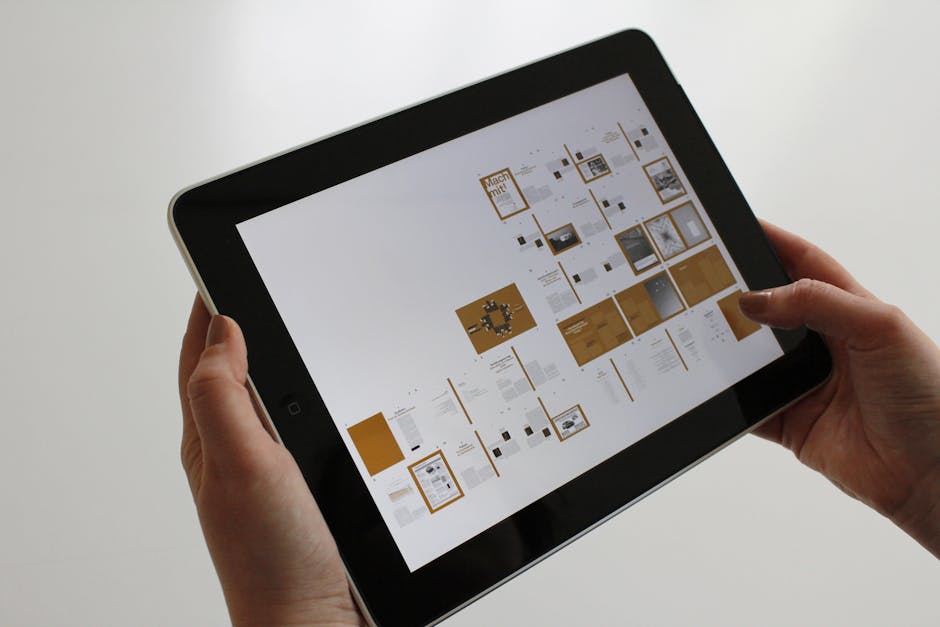Creating an Impressive Web Design Portfolio
Table of Content.
- Why You Need a Portfolio Website
- Key Elements of a Great Portfolio
- Showcasing Your Best Work
- Designing for User Experience
- Optimizing for Search Engines
- Using Social Proof to Build Trust
- Keeping Your Portfolio Updated
Why You Need a Portfolio Website
Creating a portfolio website might feel like a big step, but it's a smart move for anyone in the web design field. First, let's talk about showing your work. A portfolio website serves as a digital gallery where you can display your best designs. It's like having a personal art exhibit online. Potential clients or employers can see your skills at a glance. They don't have to dig through files or ask for samples. Everything is right there for them to explore.
Next, think about the personal touch. A portfolio website allows you to express who you are as a designer. You can share your story, your inspirations, and even your design process. This helps people connect with you on a personal level. They get to see the personality behind the designs. This is important in an industry where creativity and individuality matter.
A portfolio website is also a great way to boost your credibility. Having a professional-looking website shows that you take your work seriously. It sets you apart from others who might only have social media profiles or traditional resumes. A well-crafted portfolio can make you look more reliable and experienced.
Let's not forget about the power of accessibility. With a portfolio website, your work is available to anyone, anywhere, at any time. Whether someone is in your hometown or halfway around the world, they can view your portfolio. This opens up a world of opportunities, from freelance gigs to full-time job offers.
Lastly, maintaining your own website keeps you up-to-date with the latest web technologies. As you build and update your site, you learn new skills and adapt to changes in the industry. This constant learning makes you a better designer and more valuable in the job market.
Overall, a portfolio website is more than just a collection of your work. It's a platform for expression, a tool for communication, and a way to grow professionally.
Key Elements of a Great Portfolio
Creating a web design portfolio website that stands out involves several key elements. First, showcase your best work. Choose projects that highlight your skills and creativity. Use high-quality images and detailed descriptions. Tell a story through your work to engage visitors.
Next, ensure the portfolio is user-friendly. Navigation should be simple and intuitive. Visitors should find information quickly. A clean, organized layout helps keep their attention.
Don't forget a personal touch. Share your journey, your process, and what makes you unique. This builds a connection with potential clients or employers.
Finally, make your portfolio responsive. It should look great on all devices, from desktops to smartphones. This ensures everyone can view your work comfortably, no matter how they access your site.
Showcasing Your Best Work
When creating a web design portfolio website, it's crucial to highlight your standout projects. Begin by selecting pieces that reflect your unique style and skills. Quality trumps quantity, so focus on your most impressive work.
Each project should tell a story. Start with a brief description of the project goals and challenges. Explain your role and the tools you used. Use visuals like screenshots or videos to illustrate the journey from concept to completion.
Consider adding client testimonials to build credibility. Positive feedback strengthens your reputation. Also, categorize your projects to help visitors find what interests them. This way, potential clients can see your versatility across different design styles and industries.
Designing for User Experience
Creating a web design website that users love is all about focusing on their experience. Start by thinking about how a person will use your site. What do they need to do when they visit? Plan to make those tasks easy and enjoyable. For instance, if your site is for shopping, ensure products are easy to find and checkout is smooth.
Next, consider the layout. A clean and organized design helps users find what they need without getting lost. Use clear headings and a simple menu. Also, ensure your site looks good on both computers and phones. This is called responsive design. It means your site adjusts to any screen size.
Think about the colors and fonts you use. They should fit your brand but also be easy to read. Bright colors might catch attention, but too many can be distracting. Choose a few colors and stick with them.
Don't forget about feedback. When users click a button, they need to know something happened. Use visual cues like changes in color or small animations. This shows users your site is working as expected.
Finally, test your site with real users. Watch how they interact and ask for their thoughts. This feedback can help you spot problems and make improvements. A user-friendly web design website keeps visitors happy and coming back for more.
Optimizing for Search Engines
Creating a web design portfolio website that shines in search engine results takes some savvy moves. Let's explore some strategies to boost your online presence. First, focus on keywords. These are the words people type when searching for services like yours. For a web design portfolio, terms like "web design website" are relevant. Sprinkle these keywords naturally throughout your content, especially in titles and headings. This helps search engines understand what your site is about.
Next, think about meta tags. These are snippets of text that describe your page's content. They don't appear on the page itself but in the page's code. Make sure each page has a unique meta description. This brief summary helps search engines and visitors know what to expect. Keep it engaging and relevant to entice clicks.
Another key aspect is your site's loading speed. People don’t like waiting, and neither do search engines. A slow website can hurt your ranking. Compress images and use efficient code to speed up your site. Regularly test your site’s speed and make improvements as needed.
Mobile optimization is another crucial factor. More people browse the web on their phones. So, your site must look great on all devices. A responsive design ensures your site adapts to different screen sizes. This improves user experience and boosts your search engine ranking.
Backlinks are links from other websites to yours. They act as votes of confidence, showing search engines your site is trustworthy. Reach out to relevant blogs or partners for guest posts or collaborations. Ensure these links are from reputable sites to enhance credibility.
Content quality is king. Regularly update your site with fresh, valuable content. Share your latest projects or design insights. This keeps visitors engaged and encourages them to return. Search engines favor websites that offer useful, up-to-date information.
Finally, use analytics tools to track your progress. Tools like Google Analytics can show what’s working and where you can improve. Monitor your site’s traffic and adjust your strategies accordingly. With these tactics, your web design portfolio can climb the search engine ladder, attracting more visitors and potential clients.
Using Social Proof to Build Trust
When you're showcasing your web design portfolio website, building trust is key. Social proof is a powerful tool for this. It's all about showing potential clients that others have trusted and valued your work. Let's explore how you can effectively use social proof to enhance your web design portfolio website.
One of the simplest ways to incorporate social proof is by including testimonials. These are statements from previous clients that describe their positive experiences with your services. For example, if a client appreciated your responsive design skills, their words can reassure new visitors. Display these testimonials prominently on your website. Ensure they are genuine and relevant to the services you offer.
Case studies are another effective form of social proof. These are detailed accounts of specific projects you've completed. They highlight your design process, challenges you faced, and the solutions you provided. By showcasing real-world examples, you demonstrate your ability to deliver results. Make sure to include visuals, such as before-and-after images, to make the case studies more engaging.
Social media presence can also boost your credibility. It's a platform where potential clients can see real-time interactions and feedback from others. Share updates about your projects, client feedback, and industry insights. Engage with followers by responding to comments and questions. This interaction shows that you are active and attentive to your audience.
Awards and certifications offer another layer of credibility. If you've received any recognition in the field of web design, display it on your website. This can be badges, certificates, or logos of awards. They serve as third-party endorsements of your skills and expertise.
Lastly, client logos can add a visual impact. If you've worked with recognizable brands, include their logos on your portfolio website. This subtle form of social proof suggests that well-known companies trust your work. It can pique the interest of potential clients, encouraging them to learn more about your services.
By strategically using social proof, your web design portfolio website can become more trustworthy and appealing to potential clients.
Keeping Your Portfolio Updated
Keeping your web design portfolio website up-to-date is like maintaining a garden. You need to nourish it regularly to see it flourish. Just like plants, your portfolio needs new content and regular care. But where do you start?
First, think about the projects you've completed recently. Have you worked on any exciting design-website or development-web projects? Adding these to your portfolio shows potential clients what you can do. Highlight the skills you used and the challenges you faced. This not only makes your portfolio more engaging but also gives a clearer picture of your abilities.
Next, evaluate the design of your website-website. Is it user-friendly? Is the design responsive? A responsive design ensures your portfolio looks great on any device, be it a phone or a laptop. This is crucial in the online-web world where first impressions matter.
Don't forget the small details. Check for any outdated information or broken links. These can make your portfolio look unprofessional. Make sure your contact information is current, so interested clients can easily get in touch.
Consider adding testimonials or reviews from clients. These provide social proof and can give you an edge over others. A few lines from a satisfied client can speak volumes about your work ethic and skills.
Incorporating a blog or a section for news updates can also be beneficial. Sharing insights or tips about the business-web can position you as an expert in the field. It keeps your content fresh and gives visitors a reason to return.
Finally, schedule a regular check-up for your portfolio. Whether it's every month or every few months, having a routine ensures your portfolio remains in top shape. This proactive approach shows you're serious about your work and committed to your craft.
FAQ
Why do I need a portfolio website as a web designer?
A portfolio website is crucial for web designers as it serves as a digital showcase of your work, skills, and creativity. It helps attract potential clients, establishes your professional presence, and can significantly impact your career by demonstrating your expertise.
What are the key elements of a great web design portfolio?
A great web design portfolio should include clear and compelling case studies, an intuitive navigation system, a strong personal brand, a responsive design, and contact information. These elements ensure your portfolio effectively communicates your skills and leaves a lasting impression.
How should I select and present my best work in my portfolio?
Select projects that best demonstrate your skills, creativity, and versatility. Present them with clear visuals, concise descriptions, and the design process, if applicable. Highlight your unique contributions and the project's impact or success to effectively showcase your abilities.
How can I design my portfolio website for a better user experience?
Focus on creating a clean, simple design with easy navigation, fast loading times, and mobile responsiveness. Use engaging visuals and ensure that the content is organized and accessible, which keeps visitors interested and encourages them to explore your work further.
What SEO strategies should I use to optimize my portfolio website?
Include relevant keywords in your content, optimize images with alt tags, ensure fast site speed, and use descriptive meta tags. Building backlinks and creating high-quality content can also improve your search engine rankings, helping attract more potential clients.
How can I use social proof to build trust with potential clients?
Include testimonials from satisfied clients, case studies that highlight successful projects, and any awards or recognitions you've received. Social proof establishes credibility and reassures potential clients of your expertise and ability to deliver quality work.
Why is it important to keep my portfolio updated?
Regularly updating your portfolio ensures it reflects your most recent work and skills, showcasing your growth and keeping your content relevant. This demonstrates to potential clients that you are active in your field and committed to maintaining high standards in your work.



